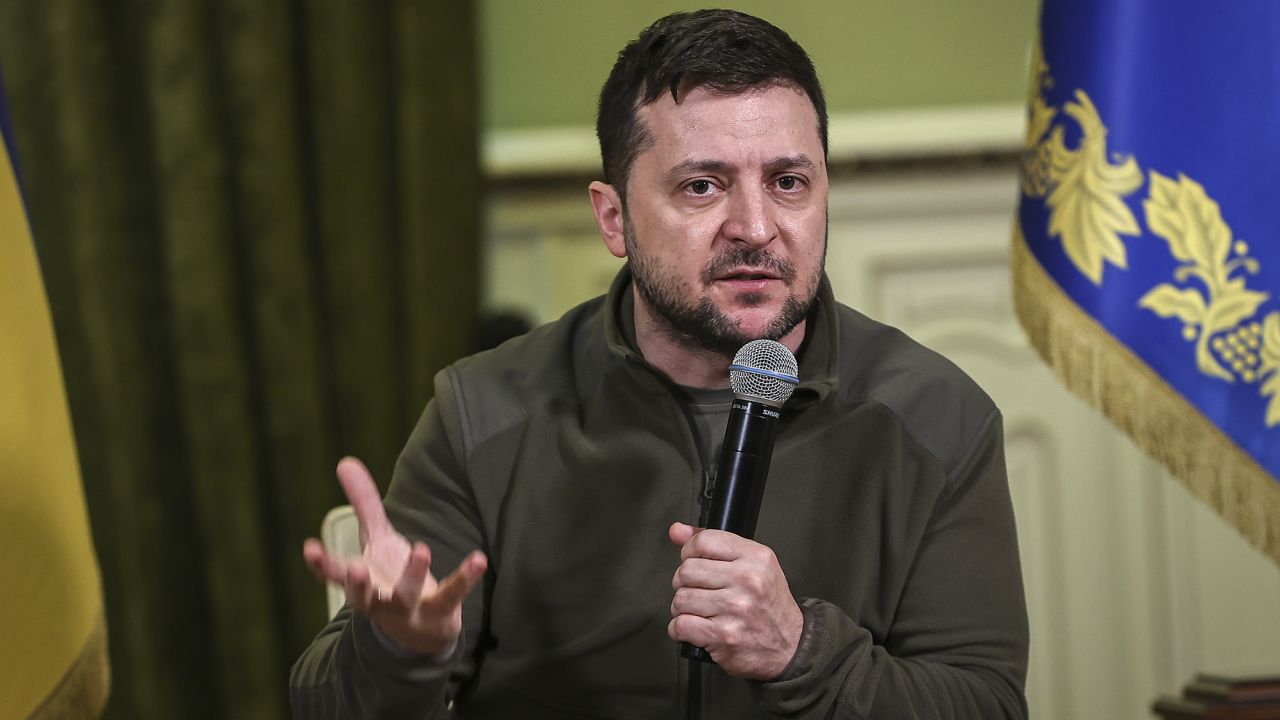Western allies moved toward giving Ukraine armoured battle vehicles, but not the heavier tanks it has asked for to fight Russia. At the same time, Washington predicted that intense fighting on the eastern frontline would last for months.
During a phone call on Wednesday, French President Emmanuel Macron told Ukrainian President Volodymyr Zelenskiy that his government would send light AMX-10 RC armoured combat vehicles to help Ukraine’s war effort.
The official said that these would be the first armoured vehicles from the West to be sent to Ukraine. However, in October, Australia said that it had given Kyiv 90 of its Bushmaster Protected Mobility Vehicles, which are protected against landmines, small arms fire, and other dangers.
Later on Wednesday, U.S. President Joe Biden said that Washington was thinking about sending Bradley Fighting Vehicles to Ukraine. Since Russia invaded Ukraine in February, Ukraine has been fighting the biggest land war in Europe since 1945. Cities have been destroyed, and tens of thousands of people have been killed or killed themselves.
Since the mid-1980s, the U.S. Army has used the powerful gun-equipped Bradley armoured vehicle to move troops around battlefields. The U.S. Army has a lot of Bradleys, and if Ukraine got some, it would have more firepower on the battlefield and be better at trench warfare.
But Biden’s move wouldn’t be enough to send the Abrams tanks that Ukraine wants. Kyiv has asked its Western allies many times for Abrams and German-made Leopard tanks, which are heavier fighting vehicles.
In a video message sent in the evening, Zelenskiy thanked Macron for the news and said it showed that other allies need to send heavier weapons.
“All of our partners will get a clear message from this. There is no rational reason why Ukraine has not yet been supplied with Western tanks,” he said.
FIGHTING IN EAST
On Wednesday, a senior U.S. government official gave a sobering assessment of the fighting in Ukraine’s eastern Donetsk region, especially around the city of Bakhmut, which is held by the Ukrainians but is mostly destroyed. Even though Russian forces have made small steps forward, the fighting is likely to stay intense for the foreseeable future, an official said.
“There is still a lot of fighting… I think that what we’re seeing in Bakhmut is a sign that fighting will continue along the front in the coming months.”
In his video message, Zelenskiy said that Ukrainian troops outside of Bakhmut were killing a lot of Russian soldiers and that Moscow was sending more troops to the area.
Reuters could not independently check the reports from the battlefield.
RUSSIA SENDS FRIGATE
Last month, Zelenskiy told the U.S. Congress that the tens of billions of dollars in U.S. aid to help Ukraine fight Russia’s invasion was not charity, but an investment in global security.
The United States is working on a new package of weapons aid that could be announced in the next few days. This is on top of the $21.3 billion in security aid that has already been given to Ukraine.
The United States has sent more powerful weapons, such as Stinger anti-aircraft missiles that can be fired from the shoulder, Javelin anti-tank missiles, the HIMARS rocket system, and NASAMS surface-to-air missiles.
During Zelenskiy’s trip to Washington, the U.S. promised to send the high-tech Patriot missile system to protect against Russian drone and missile attacks.
Andriy Cherniak, who works in the intelligence section of the Ukrainian defence ministry, told the RBC-Ukraine news outlet that Kyiv didn’t think Russia would stop its offensive this year, even though it was killing a lot of people.
“Ukrainian military intelligence says that the Russian army could lose up to 70,000 people in the next four to five months. And the leaders of the occupying country, Russia, are ready for such losses, “Cherniak said.
He said that Russian leaders “know they will lose, but they don’t plan to end the war.”
Russian President Vladimir Putin sent a frigate with new hypersonic cruise missiles that can travel faster than five times the speed of sound to the Atlantic Ocean on Wednesday. This was a sign to the West that Russia will not back down over Ukraine.
Ukraine said that in the last 24 hours, Russia had attacked civilian infrastructure in Kramatorsk, Zaporizhia, and Kherson with seven missiles, 18 air strikes, and more than 85 attacks from multiple-launch rocket systems.
Russia says it didn’t attack civilians on purpose.
Hanna Malyar, the deputy defence minister of Ukraine, said that Russia would keep making more assault units and focus on taking Bakhmut and other cities north of Donetsk.
Malyar wrote on the messaging app Telegram that, according to the ministry’s main intelligence directorate, Russia’s big losses meant that Moscow would probably have to announce a second partial mobilisation in the first quarter of the year.
Russia started what it calls a “special military operation” in Ukraine on February 24. It said that its own security was at risk and that Russian speakers needed to be protected. Ukraine and its allies say that Russia started a war without a reason to take over land.
